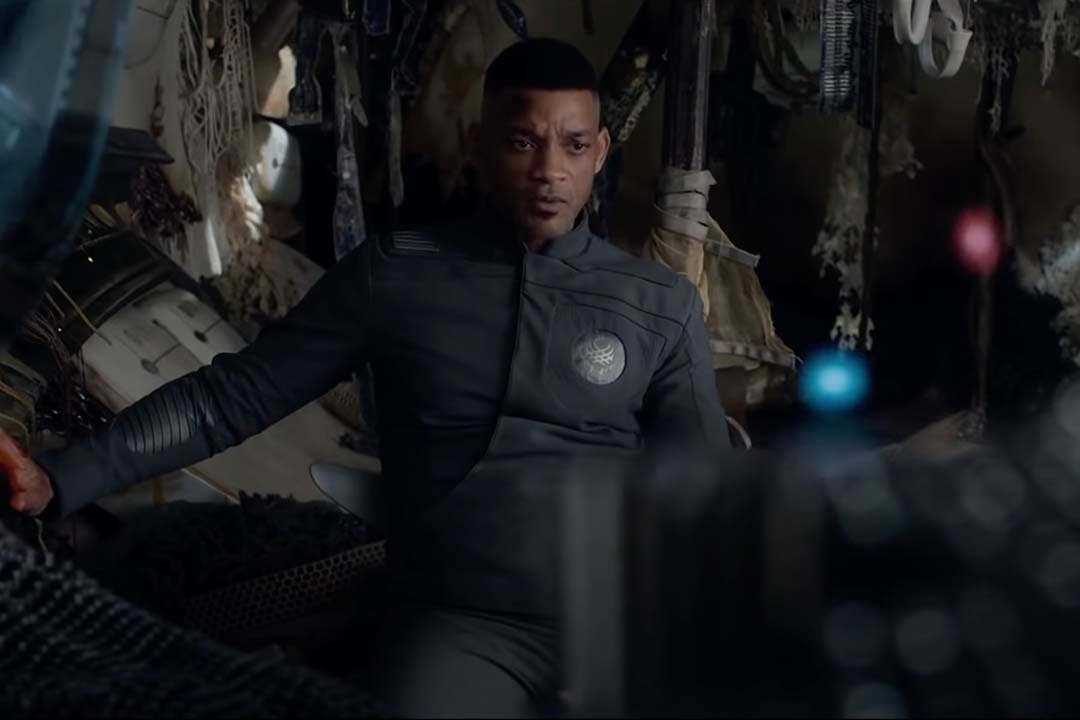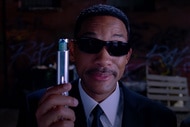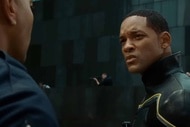Create a free profile to get unlimited access to exclusive videos, sweepstakes, and more!
Will Smith Originally Pitched After Earth as a Trilogy Bigger Than Marvel or Star Wars
Will Smith originally wanted After Earth to expand well beyond the bounds of the first film.

These days, After Earth is mostly remembered, for better or worse, as a famous box office bomb. Starring Will and Jaden Smith and directed by M. Night Shyamalan, the film couldn't marshal its talent into something more, and become both a critical and commercial disappointment when it hit theaters just after Memorial Day in 2013.
It's been 10 years, and After Earth hasn't really had the kind of reassessment that would make you think differently about it, but that doesn't mean there's nothing worth discussing here. The film itself may not have worked, but in terms of cinema history, it ranks as a fascinating example, along with other films from the same era, of overreach, an attempt to build a shared universe and get out ahead of an audience that, in the end, just wasn't receptive.
RELATED: Every M. Night Shyamalan Movie, Ranked
Back in May of 2013, just days before After Earth -- the story of a father (Will Smith) and son (Jaden Smith) stranded on a hostile planet in the distant future -- was set to hit theaters, The Wrap published a report about the elder Smith's ambitions for the film. According to reports at the time, Will Smith saw the movie not just as a chance to collaborate with his son and Shyamalan, his hand-picked choice for the movie, but also as a vehicle that would made Jaden into a next-generation action star. Smith had devised the story for the film himself, worked with Hollywood screenwriters like Gary Whitta (The Book of Eli) and Shyamalan himself to get a script in order, then placed himself in a secondary role, while his son was left to go out into this sci-fi world and have adventures. The end result was clearly a vehicle for Jaden, with Will acting in a supporting capacity, but the big plans for After Earth's impact did not stop there.
The same Wrap report included word that Smith was already thinking about sequels for the film, which would expand the universe and build out a world to rival the other rising franchises of the day. Five years later, thanks to Ben Fritz's book The Big Picture: The Fight for the Future of Movies, we got even more detail about these plans.
According to Fritz, Smith and his Overbrook Entertainment production company spent the build-up to After Earth constructing a vast and elaborate sci-fi universe, complete with other planets, centuries of history, and even plans to tell stories centered on multiple families, not just the one we got in the first film. The result was a "bible" for the franchise that reached nearly 300 pages, along with countless pieces of concept art and a pitch document that compared the franchise's potential to things like Harry Potter and Star Wars.
But the plans didn't end with movie sequels. Fritz also reported that Smith's ambitions for After Earth extended into the world of transmedia, and included things like animated series, live-action tie-in TV shows, theme park attractions, video games, and much more. Of course, we all know that just wasn't meant to be. Despite Sony Pictures' efforts to sell the film to audiences, even reported attempts to disguise Smith's supporting role in the film to make moviegoers think they'd see more of him, After Earth opened small, and stayed that way. Today, the film is an amusing pop culture artifact, a reminder of a time when just about everyone was trying to jumpstart a cinematic universe whether audiences wanted it or not. That doesn't make the movie any better, but it does at least make it interesting.
After Earth is now available to stream on the SYFY app, and airing on the SYFY channel. Check local listings.


























